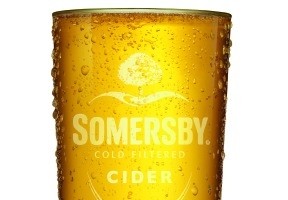The craft at the core of cider

The world of cider is one of contrasts. Recently I spent the weekend in orchards, long wet grass swishing against my shins, the occasional windfall crunching under foot. I spent more time in sheds almost overcome by the heady, rich aroma of apples being pressed, the air so thick with it, so concentrated, it was like breathing fruit compote. I watched clear perry juice trickle from wood and sackcloth presses, tasting last year’s vintage, crystal clear and pale gold like white wine.
It would have caught the sun and glinted beautifully if it hadn’t been a drizzly weekend in Herefordshire.
On the following Monday I was at the Publican’s Morning Advertiser’s first ever Cider Trends Summit. A room so busy I think it surprised even the organisers sat quietly as people in suits talked about ‘usage occasions’, ‘penetration’, ‘innovation’, ‘premiumisation’ and ‘long alcoholic drinks’ and, with one or two exceptions, barely mentioned words such as ‘apples’ or ‘orchard’ at all.
Rustic charm
I used to be a drinks marketer. For me, this was a bittersweet reminder of the world I left behind so I could, among other things, tramp around orchards in the rain instead of trying to get the last biscuit in the meeting room as the PowerPoint presentation from the sales department entered its third day.
For Bill Bradshaw, the co-author of my new book, World’s Best Cider, the experience was genuinely bewildering. “I honestly didn’t understand half of what they were saying,” said Bill, looking lost in his flat cap and lumberjack shirt among the suits.
The cider market does, of course, need both sides of this contrast. A cider maker who wants absolutely nothing to do with the people in suits and their sales presenters is probably going to be restricted to selling their product from the farm gate or perhaps a couple of local pubs at best. This, of course, adds to cider’s rustic charm.
But as a drinker, once you’ve tasted the really good stuff it can be frustrating if you never see the faintest sign of it back home in the smoke.
This is why I wrote World’s Best Cider, and why I used this as an excuse to make a speech at the summit about the obscure and misunderstood cider market.
My writing is ultimately driven by extreme selfishness: I used to joke that I was a beer writer because I was frustrated that I couldn’t get a decent beer near where I live in London. Now every local pub around N16 has a range of well-kept ales, most of them have a smattering of the kind of beers I used to have to go abroad to sample, and many stock the new wave of craft beer that I would never dare to imagine when my first book was published 10 years ago.
Complex
Now we need to do the same job for cider. And beyond my selfish desire for something a little more complex and intriguing than the mainstream options, I believe pubs need it too. While more people now drink cider than beer, according to Mintel, they do so in limited quantities, and cider is still only a 10th of the size of beer in volume.
While cider is popular, worryingly only 8% of drinkers think it is ‘sophisticated’, and only 14% agree that it is ‘worth paying more for’.
Cider has previous form as a cheap, down-market drink, and no one (apart from maybe a few single-minded beer brewers) wants it to go back there.
That’s why a bit of emphasis on true premium ciders would benefit the entire market, raising the image of cider as a whole.
Most drinkers will always opt for the consistency and straightforwardness of the big commercial brands. But vintage craft ciders, made from 100% juice and blended from individual oak barrels, different in character every year, show how sophisticated cider can be at the top end.
Innovation
Cider makers invented what we now call the méthode Champenoise a century before Dom Perignon popped his first cork, and a good bottle-conditioned perry is superior to any bog-standard Champagne. Silky, intense cidre de glace (ice cider), invented in Canada almost 25 years ago, can beat dessert wine at its own game hands down.
If you don’t believe me, ask the head wine maker at Château d’Yquem, who swapped a case of his finest for a case of Canadian brand Neige.
Analysts have started grumbling that cider is nearing the end of its innovation cycle. When you look at the array of cider styles available in leafy parts of Britain and other cider-making regions around the world, it becomes obvious that we have barely scratched the surface of what cider can offer.
The craft-beer revolution went mainstream in 2013. In 2014, it’s time for craft cider to shine.







